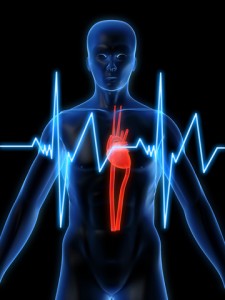Using powerful X-rays, Faculty of Medicine scientists have reconstructed a crime scene too small for any microscope to observe – and caught the culprit of arrhythmia in action.
 Characterized by the heart beating too fast, too slow or inconsistently, arrhythmias may cause a decrease of blood flow to the brain and body, resulting in heart palpitation, dizziness, fainting, or even death.
Characterized by the heart beating too fast, too slow or inconsistently, arrhythmias may cause a decrease of blood flow to the brain and body, resulting in heart palpitation, dizziness, fainting, or even death.
Presented Feb. 17 at the 2013 Annual Meeting of the American Association for the Advancement of Science (AAAS) in Boston, the 3-D animated model reveals for the first time how gene mutations affect the crucial pathway in heart muscle cells that controls its rhythm.
“Our heart runs on calcium,” says Filip Van Petegem, an Assistant Professor in the Department of Biochemistry and Molecular Biology. “Every heart beat is preceded by calcium ions rushing into heart muscle cells. Then, a special protein opens the pathway for calcium to be released from compartments within these cells, and in turn initiates the contraction.”
Mutations to the gene that forms this protein have been linked to arrhythmia and sudden cardiac deaths in otherwise healthy people.
“Reconstructing the pathway and its dynamic motion enabled us to see the process in action,” Dr. Van Petegem says. “We found that the mutations destabilize the pathway’s structure, causing calcium to be released prematurely. Finding a way to stabilize the pathway could prevent these deadly conditions and save lives.”